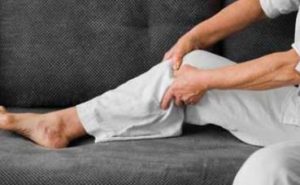
Peripheral Artery Disease (PAD) is a condition that increases your risk of Coronary Heart Disease(CHD), heart attack, stroke, and transient ischemic attack.
It is a common sign of atherosclerosis, which refers to the narrowing and hardening of the arteries due to the buildup of fatty deposits and plaques, leading to reduced blood flow and an increased risk of cardiovascular events. It most commonly affects the peripheral arteries but can also impact the coronary arteries that supply blood to the heart.
In order to treat PAD, it is important to first diagnose it on time. Identifying the symptoms and assessing the risk factors therefore play a crucial role. But let’s begin by understanding what PAD is and its link to cholesterol.
What Does It Mean To Have A Healthy Heart Rate? Expert Answers
Peripheral Artery Disease (PAD) Prevalence
According to a study published in the Journal Frontiers in Cardiovascular Medicine reported that in 2019, more than 11.3 crore people lived with PAD and more than 10.5 lakh new cases occurred globally, leading to 74,063 deaths.
Another study published in the Journal of Vascular Surgery, there has been a 72% increase in the global prevalence of PAD from an estimated 65,764,499 persons in 1990 to 113,443,016 in 2019.
“Prevalence per one lakh persons increased 13% and the prevalence per one lakh age-standardised decreased 22%,” the study noted.
The Link Between Cholesterol And PAD
According to Dr Jaideep Menon, Consultant, Adult Cardiology, Amrita Hospital, Kochi, cholesterol is carried in the blood by lipoproteins, which are made up of proteins and fats.
Discussing the two main types of cholesterol, he explained, “Low-Density Lipoprotein (LDL) is often referred to as “bad” cholesterol because it can increase your risk for coronary artery disease by contributing to the build-up of plaque in the arteries, whereas High-Density Lipoprotein (HDL), or “good” cholesterol helps to remove excess cholesterol from the bloodstream. High levels of LDL cholesterol are associated with an increased risk of PAD because LDL cholesterol can build up in the walls of the arteries, forming plaques that narrow and harden the arteries.”
“Over time, this narrowing can restrict blood flow to the legs and feet, causing pain and other symptoms associated with peripheral artery disease. Therefore, it is important to maintain healthy levels of LDL cholesterol to reduce the risk of developing PAD and other cardiovascular diseases,” he added.
Warning Signs Of PAD In Your Legs
PAD is a condition in which the arteries that supply blood to the legs and feet become narrowed or blocked, often due to a build-up of fatty deposits called plaques. The symptoms therefore occur more commonly in the leg, however, can vary depending on the severity of the condition. These include:
- Pain or cramping in the legs or feet, especially during physical activity or exercise (claudication)
- Numbness or weakness in the legs
- Coldness or tingling sensations in the legs or feet
- Wounds on the feet or legs that do not heal or heal very slowly
- Decreased hair growth or weak or absent pulses in the feet or legs
- Constant pain in the legs or feet that occurs even when the person is at rest
Severe PAD can reduce the blood flow to the legs and feet and can lead to tissue damage, infection, and even gangrene, making it important to seek medical attention.
Is Your Heart In Good Shape? 5 Important Tests That Can Tell You
Who Is At Risk?
Common risk factors of PAD include:
- Smoking
- High blood pressure
- Atherosclerosis
- Diabetes
- High cholesterol
- Age above 60 years
How To Reduce Your Risk
Several lifestyle changes can be made to help reduce the risk of PAD:
- Eating a diet that is high in fruits, vegetables, whole grains, and lean protein sources
- Regular physical activity, such as brisk walking, running, cycling, or swimming
- Maintaining a healthy weight through a combination of diet and exercise
- Quitting smoking
- Finding ways to manage stress, such as through meditation, yoga, or other relaxation techniques
- Getting regular cholesterol screenings
Bottomline
The best way to prevent the development of PAD is by making healthy lifestyle choices and steering clear of factors that put you at risk. Maintaining a healthy weight, eating right, exercising regularly, and quitting smoking and alcohol consumption can make a major difference. Moreover, get your regular screenings and monitor your overall health.




 Driving Naari Programme launched in Chandigarh
Driving Naari Programme launched in Chandigarh






























